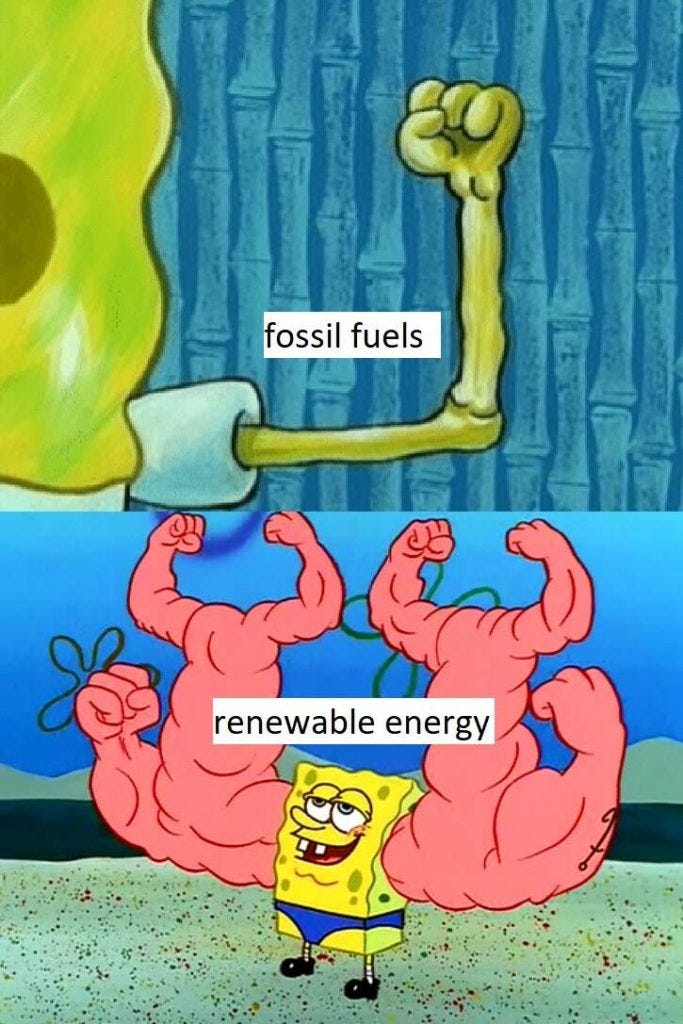Previously on Giuseppe’s Glimpse: In the last episode, we explored how niche markets thrive through globalisation and digitalisation, and discussed key strategies for success. If you missed it, catch it here! 🚀
Buongiorno everyone! 👋
In 2017, The Economist boldly declared, "Data is the new oil".
This statement captured the shift from an economy dominated by energy companies to one led by tech giants like Google, Amazon, and Facebook.
Essentially, we are talking about the transition to the digital age, where data replaced oil as the most valuable resource. 💰
Fueled by the American dream, Silicon Valley culture, and sky-high valuations, tech stocks soared to unprecedented heights.
But as we move forward, the reality of this digital age is getting increasingly complex.
We’ve now entered the so-called post-digital age, where the hype of the digital era meets its systemic challenges.
With the rise of generative AI, it's becoming clear that maintaining our digital infrastructure requires resources comparable to traditional energy sectors.
Data centres, essential for powering the AI revolution, demand vast physical spaces and huge amounts of energy. 🔌
These facilities, much like nuclear plants or oil refineries, highlight a key paradox: the digital age's backbone is deeply connected to the very energy sources it once aimed to leave behind.
The hidden costs of digital innovation
Let's delve into the numbers.
According to the annual electricity report from the International Energy Agency (IEA), in 2022 data centres consumed about 2% of the world’s electricity, a figure that is expected to rise significantly with the growth of AI technologies. ⚡
Google, for instance, operates data centres that use as much electricity as entire cities.
In 2018, they consumed 10.62 terawatt-hours of electricity, almost double what San Francisco uses.
If this already sounds alarming, consider the energy demands of generative AI.
Training a large language model like OpenAI’s GPT uses nearly 1,300 megawatt-hours of electricity—the same as what about 130 US homes use annually. 🏠
A single Google search takes 0.3 watt-hours of electricity, while a ChatGPT request takes 2.9 watt-hours—almost 10 times more.
These staggering numbers reveal an uncomfortable truth: our digital economy, while innovative, is incredibly energy-intensive.
The construction and maintenance of data centres require significant amounts of electricity and substantial cooling solutions to prevent overheating.
This has led to an increased reliance on non-renewable energy sources, bringing us full circle back to the original dependency on oil and other fossil fuels. 🛢️
We’re essentially witnessing a reversion to old paradigms where oil and energy play a central role.
The dream of a purely digital, data-driven economy free from traditional energy constraints suddenly seems unrealistic.
Until renewable energy sources can meet the demands of these sprawling data infrastructures, oil remains indispensable.
This reality calls for a re-evaluation of our previous assumptions and highlights the need for a more sustainable approach to data and energy consumption. 🔄🌱
Greening the grid
So, what does the future hold?
Transitioning to renewable energy sources isn’t just an environmental imperative but a strategic necessity for sustaining the digital economy. 📊
Companies like Google and Amazon are making strides in this direction.
Google has pledged to go entirely carbon-free by 2030, while Amazon Web Services (AWS) aims to power its operations with 100% renewable energy by 2025.
However, achieving these goals will require significant advancements in renewable energy technologies and substantial investments in infrastructure. 💵
One promising approach to addressing this challenge is the concept of "data minimalism".
This emerging practice focuses on efficient data management to reduce the need for excessive storage and processing.
Here's how it works: 🔍
Streamline data collection: Only collect the data you truly need. This reduces storage needs and minimises the energy required to process and maintain large datasets.
Optimise data processing: Use advanced algorithms and machine learning to analyse data more efficiently, extracting meaningful insights without needing extensive computational power.
Improve data storage: Implement energy-efficient storage solutions. For instance, cold storage for infrequently accessed data can save considerable energy.
Enhance data utilisation: Focus on using data effectively rather than hoarding it. Better data utilisation can lead to more informed decisions and improved business outcomes with less energy expenditure.
By prioritising quality over quantity, companies can significantly cut their energy footprint while maintaining, or even enhancing, their operational capabilities. 📈🌿
Data Renaissance
The narrative of "data is the new oil" once marked the dawn of the digital age with its powerful metaphor.
However, as we stand at the crossroads of data and energy, it's clear that this analogy needs rethinking. 🤔
The true challenge isn't simply drawing parallels between data and oil, but rather, embarking on a new era – a Data Renaissance.
How do we pave the way?
By harnessing data in a way that is sustainable, efficient, and mindful of our environmental impact. ♻️
Looking ahead, the question isn't just how to keep the lights on in our data centres, but how to power them in a way that ensures a sustainable and equitable digital economy.
So, how can your business adapt to this new paradigm and lead the way in sustainable data management?
The answer might just be the key to our digital future. 🌱🌐
Stay curious! 🙌
-gs
I would like to thank the great Scott Galloway for the inspiration on this topic!
I recently had an inspiring conversation with the great Greg Hoffman, former CMO of Nike and author of the bestseller Emotion By Design.
We covered brand personality, the role of AI in retail, the importance of a clear purpose and vision for leadership, and much more.
Curious? Watch the full interview! 📽️
Oh, wow! You made it to the end. Click here to 👉 SHARE this issue with a friend if you found it valuable.









Just to complete and complement the reasoning around watts, energy, efficiency, and oil...
"The human brain consumes around 20W or 0.3 kWh a day, a remarkable feat of efficiency. However, AI systems like GPT-4, while impressive in their capabilities, exhibit significantly higher energy consumption, with estimates ranging from 0.3 kWh to 6 MWh per query. This stark difference underscores the challenges of sustainability in the digital age, where the energy demands of AI technologies raise concerns about their environmental impact."
via: https://www.thealgorithmicbridge.com/p/were-not-ready-for-the-aliens-to